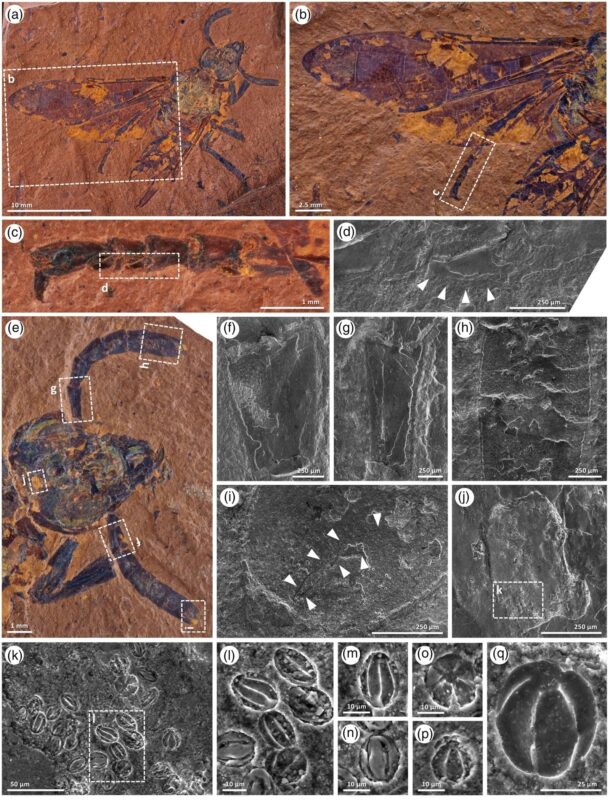Extinct for 16 Million Years, This Ancient Species Returns to Stun Scientists!
Scientists have been stunned by a major breakthrough in Australia: an ancient species thought to be extinct for 16 million years has been unearthed in extraordinary detail. The fossil site of McGraths Flat has yielded a stunning find: the ancient Baladi Warru, a species of sawfly that disappeared from Earth’s ecosystems millions of years ago.
Known for its distinctive saw-shaped ovipositor, this remarkable insect has stunned researchers with its pristine preservation and the clues it holds about ancient ecosystems.
A Prehistoric Treasure Unearthed
This incredible fossil not only includes the insect itself but also pollen grains, revealing an extraordinary interaction with flowering plants such as Quintinia, a genus still found today. The discovery opens a portal to understanding ancient pollination networks and ecosystems that existed during the Miocene era.
Intricate Details of Baladi Warru
Researchers have meticulously analyzed the Baladi warru using advanced techniques, revealing its structural and ecological nuances. Some standout features include:
- Morphological precision: Its ovipositor, a specialized structure used for laying eggs, mirrors modern sawflies but with unique adaptations specific to its Miocene habitat.
- Preservation quality: Fossilized remnants include microscopic details, such as grains of pollen from its host plants, offering a rare glimpse into its diet and ecological interactions.


A: Holotype (general view).
B: Wing.
C: Tarsal segments 1 to 5 of left median leg.
D: Tarsal segment 3 of left median leg (arrowheads indicating plantula).
E: Head.
F: Left antennal segment 3.
G: Right antennal segment 3.
H: Left antennal segment.
I: Right antennal segment (arrowheads indicating unknown internal filiform structures).
J: Vertex.
K-P: Pollen grains of Quintiniapollis psilatospora on the vertex, with varying degrees of compression and filling, visible in equatorial (M, N), polar (O) or semi-equatorial (P) views.
Q: Pollen isolated from Q. psilatospora on another McGraths Flat sample.
Photographs (A-C, E) and scanning electron microphotographs (D, F-Q). Insets show the position and orientation of the enlarged views in relation to the overall photos.Technical Highlights
| Feature | Description |
|---|---|
| Length | Approximately 5 mm |
| Diet | Herbivorous larvae consuming plant tissues |
| Pollen associations | Evidence of interaction with flowering plants like Quintinia |
| Geological age | ~16 million years |
| Migration path | Originated from Gondwana; found in Australia and South America |
A Shocking Twist: From Gondwana to Australia
The evolutionary roots of these sawflies date back to the Cretaceous period, over 100 million years ago, when they roamed the landscapes of the supercontinent Gondwana. Their migration and adaptation to the fragmented landmasses of modern Australia and South America shed light on the long-lost biodiversity corridors of Earth’s deep past.
Baladi warru’s role as both a pollinator and a consumer of plant tissues hints at a duality that could rewrite the ecological balance theories of prehistoric times. It raises provocative questions about the adaptation and survival of species amidst Earth’s ever-changing climates and landforms.
Can this fossil predict the future?
This discovery isn’t just a look back—it may hold keys to the future. As climate change accelerates, the study of ancient ecosystems like the one Baladi warru inhabited offers insights into how current species might adapt—or fail—in the face of environmental upheaval.
Scientists believe these extinct interactions could act as a mirror, helping us predict how modern ecosystems may respond to mounting pressures. Could the answers to saving Earth’s biodiversity be buried within these 16-million-year-old clues?
Source link
